Related Research Articles
The Gough-Calthorpe family is descended from ancient and notable families who both held lands in the area around Birmingham, England.
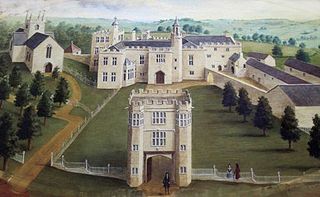
Old Shute House, located at Shute, near Colyton, Axminster, Devon, is the remnant of a mediaeval manor house with Tudor additions, under the ownership of the National Trust. It was given a Grade I listing on 14 December 1955. It is one of the most important non-fortified manor houses of the Middle Ages still in existence. It was built about 1380 as a hall house and was greatly expanded in the late 16th century and partly demolished in 1785. The original 14th-century house survives, although much altered.
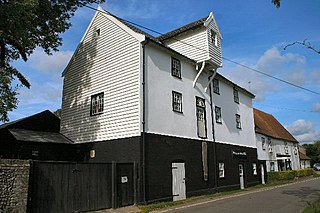
Pakenham is a village and civil parish in the West Suffolk district of Suffolk in eastern England. Its name can be linked to Anglo-Saxon roots, Pacca being the founder of a settlement on the hill surrounding Pakenham church. The village describes itself as the "Village of Two Mills", as it has a water mill which claims to be the only working example in the county. The Pakenham windmill no longer works.

Sir William Calthorpe KB was an English knight and Lord of the Manors of Burnham Thorpe and Ludham in Norfolk. He is on record as High Sheriff of Norfolk and Suffolk in 1442, 1458 and 1464 and 1476.

Redgrave is a village and civil parish in Suffolk, England, just south of the River Waveney that here forms the county boundary with Norfolk. The village is about 4+1⁄2 miles (7 km) west of the town of Diss. The 2011 Census recorded the parish population as 459.

Baron Calthorpe, of Calthorpe in the County of Norfolk, was a title in the Peerage of Great Britain. It was created in 1796 for Sir Henry Gough, 2nd Baronet, who had previously represented Bramber in Parliament. Born Henry Gough, he had assumed the additional surname of Calthorpe upon inheriting the Elvetham and Norfolk estates of his maternal uncle, Sir Henry Calthorpe, in 1788. The Baronetcy, of Edgbaston in the County of Warwick, had been created in the Baronetage of Great Britain on 6 April 1728 for Lord Calthorpe's father Henry Gough, who represented Totnes and Bramber in the House of Commons. He was the husband of Barbara, daughter of Reynolds Calthorpe. Three of Lord Calthorpe's sons, the second, third and fourth Barons, both succeeded in the titles. The latter sat as a Member of Parliament for Hindon and Bramber. In 1845 he assumed by Royal licence for himself the surname of Gough only. His eldest son, the fifth Baron, represented East Worcestershire in Parliament as a Liberal. The fifth Baron's younger brother, the seventh Baron, was a Lieutenant-General in the Army. The latter's son, the eighth Baron, was succeeded by his grandson, the ninth Baron. The titles became extinct on the death of the ninth Baron's younger brother, the tenth Baron, in 1997.
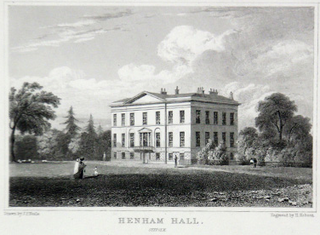
Henham Park is an historic 4,200 acres (1,700 ha) estate in the parish of Wangford with Henham, situated north of the village of Blythburgh in the English county of Suffolk. The park is bordered to the east by the A12 road and to the west by the A145, the two roads meeting to the south of the estate.. It was historically the seat of the Earl of Stradbroke. In 1953 the 4th Earl demolished the Georgian manor house, known as Henham Hall.
This is a list of Sheriffs and High Sheriffs of Suffolk.
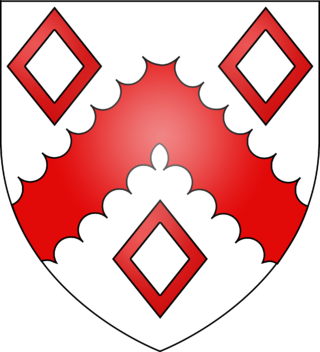
The Spring Baronetcy, of Pakenham in the County of Suffolk, is a title in the Baronetage of England.

Sir William Spring, 1st Baronet was an English landowner and politician. During the English Civil War, he was one of the leading Parliamentarian officials in East Anglia. He was the Member of Parliament for Bury St Edmunds before being removed during Pride's Purge in 1648, but was returned to the House of Commons as the MP for Suffolk shortly before his death in 1654.

The Spring family is a Suffolk gentry family that has been involved in the politics and economy of East Anglia since the 15th century, as well as holding large estates in Ireland from the 16th century.
Sir William Spring of Lavenham was an English politician and landowner.

Sir Thomas Spring, 3rd Baronet of Pakenham Hall in Pakenham, Suffolk, was an English baronet and landowner who served as High Sheriff of Suffolk in 1696.

Hanwell is a village and civil parish in Oxfordshire, about 2 miles (3 km) northwest of Banbury. Its area is 1,240 acres (500 ha) and its highest point is about 500 feet (150 m) above sea level. The 2011 Census recorded the parish's population as 263.

Titsey Place is an English country house near Oxted in Surrey, England. It was successively the seat of the Gresham and Leveson-Gower families and is now preserved by a charitable trust for the nation.

Augustus Gough-Calthorpe, 6th Baron Calthorpe, was a British agriculturist and philanthropist.
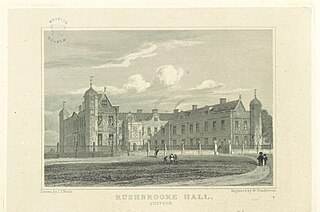
Rushbrooke Hall was a British stately home in Rushbrooke, Suffolk. For several hundred years it was the family seat of the Jermyn family. It was demolished in 1961.

Henry Gough-Calthorpe, 1st Baron Calthorpe, known until 1796 as Sir Henry Gough, 2nd Baronet, was a British politician who sat in the House of Commons from 1774 to 1796 when he was raised to the peerage.

Nether Hall is a country house situated in the village of Pakenham, Suffolk. It was one of the ancient manors of the village and seat of the Greene baronets.
Sir Arthur Hopton of Cockfield Hall in Yoxford, Suffolk was an English knight, landowner, magistrate, and Member of Parliament.
References
- ↑ Nigel R. Whitwell, 'The Manors of Pakenham', Pakenham - Village of Two Mills (1984). (Accessed 15 February 2015)
- ↑ Nigel R. Whitwell, 'The Manors of Pakenham', Pakenham - Village of Two Mills (1984). (Accessed 15 February 2015)
- ↑ Francis Blomefield, Charles Parkin, An Essay Towards a Topographical History of the County of Norfolk (W. Miller, 1805), p.267.
- ↑ Suffolk County Council - Heritage, 'Pakenham' (Accessed 15 February 2015)
- ↑ Suffolk Institute, 'Pakenham' (Volume XXXVI, 1985) (Accessed 15 February 2015)
- ↑ Suffolk Institute, 'Pakenham' (Volume XXXVI, 1985) (Accessed 15 February 2015)
- ↑ John Marius Wilson, Imperial Gazetteer of England and Wales (1870-2), p.549-61.
- ↑ Nigel R. Whitwell, 'The Manors of Pakenham', Pakenham - Village of Two Mills (1984). (Accessed 15 February 2015)